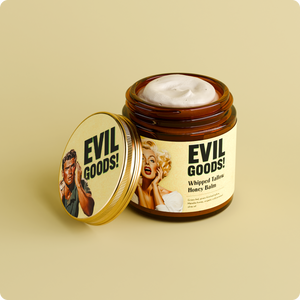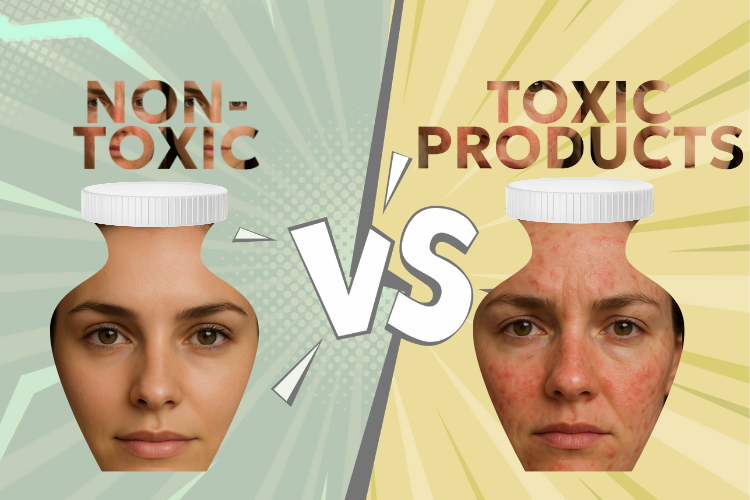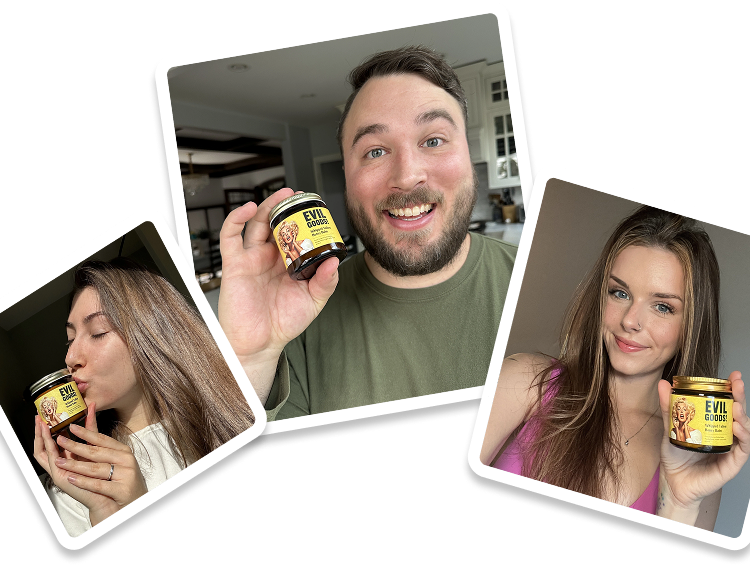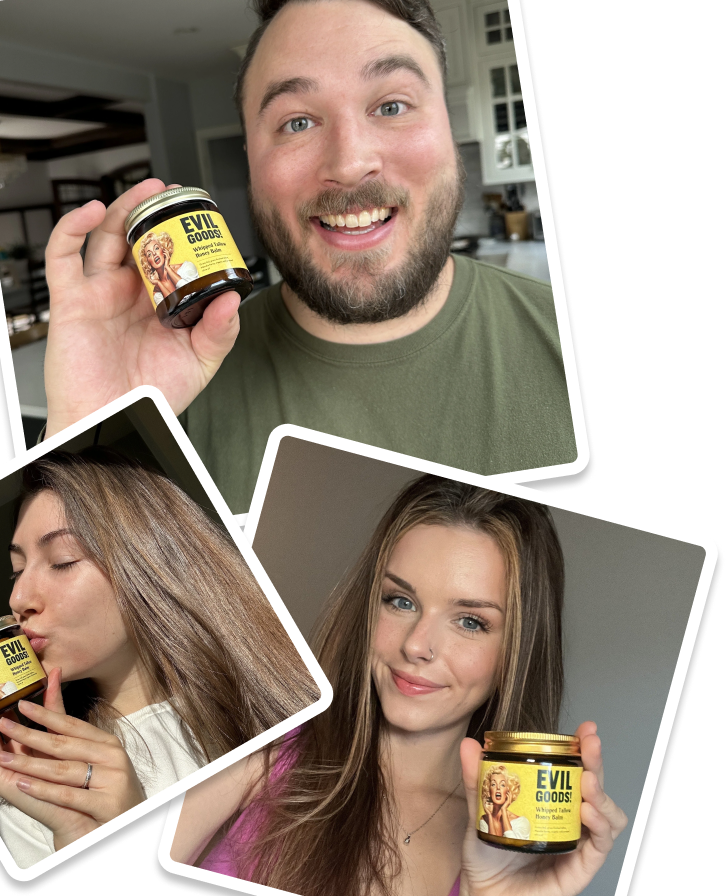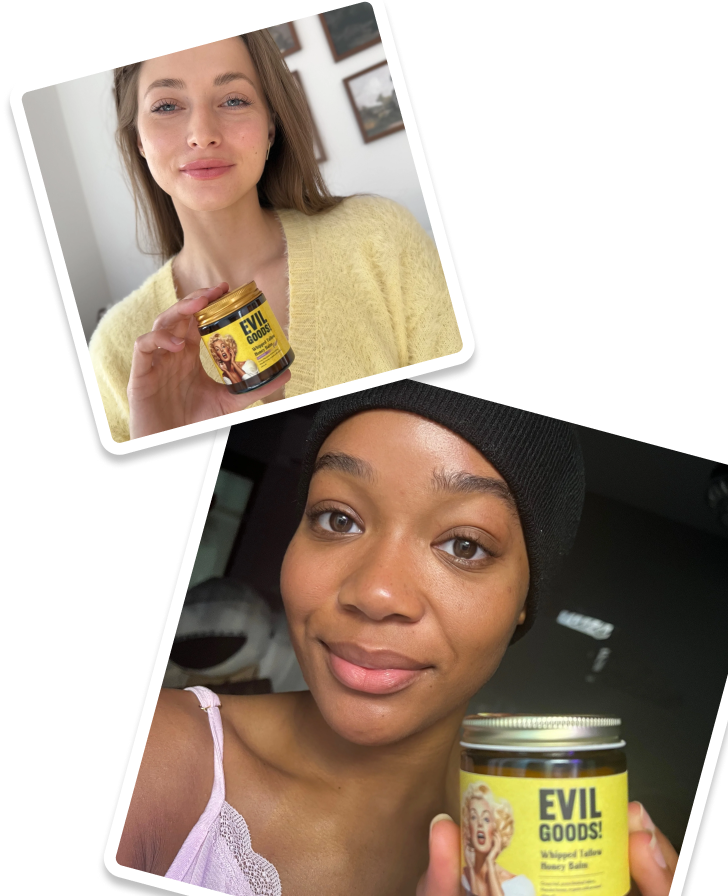Stinging. Redness. Peeling layers of skin. Your face and forehead itch so badly that you can't form a coherent thought, except for one mocking reminder: the product that did this to you promised to be non-toxic. Or toxic-free. Or the brand’s equivalent of “This product doesn't contain harmful chemicals or anything detrimental to human health.”
The non-toxic vs toxic products cold war has been going on for longer than the US Consumer Product Safety Commission has even had a formal definition of toxic substances. In that time, the Toxic Free Foundation introduced its own definition of “toxic free,” and the US Code of Federal Regulations weighed in on what a “non-toxic” label likely means. And while regulators and watchdogs debate the semantics, consumers are waiting for clear answers.
We’ll explain the difference between toxic vs. non-toxic products, common harmful substances to watch out for, and share some great non-toxic alternatives that’ll be kind to your skin. We'll also guide you on how to choose non-toxic products.
Toxic vs Non-Toxic Products: What Do They Really Mean?
What Are Toxic Products?
Section 1500.3 of the Code of Federal Regulations defines the term “toxic” as anything that can “cause personal injury or illness” if ingested, inhaled, or absorbed “through any body surface,” aka, any part of your skin or your body.
What does this mean for you? If a product can cause physical injuries or sickness, such as skin irritation, cancer, and heart disease, or harm human health in any other way, it can be considered toxic.
What Are Non-Toxic Products?
Non-toxic products are a bit trickier to define than toxic products because of the many nuances that come into play. A common belief is that nontoxic products don't contain any harmful substances, harsh chemicals, or toxic ingredients. They contain natural ingredients. They don't disrupt hormones or contaminate the outdoor air, and, hopefully, they're eco-friendly.
The Code of Federal Regulations, in section 260.10, actually reflects this viewpoint. It says that a product represented to be non-toxic must be non-toxic not just for humans, but also for the environment.
By implication, natural products shouldn't just be safe for your body. Beyond that, they shouldn't pollute waterways after rinsing off, harm aquatic life, or contaminate drinking water. Neither should they poison the soil, trigger deforestation, deplete rare plant species, or have other negative environmental impacts.
What Ingredients Are Considered Toxic?
If you see these items on ingredient labels, it's a sign of high toxicity levels of those products.
Formaldehyde & Formaldehyde Releasers
While formaldehyde helps lengthen the shelf life of personal care products, it's also among the most toxic chemicals out there, capable of causing life-threatening allergic reactions. That said, not everyone is bound to suffer health problems because of this chemical. The Cosmetic, Toiletry & Fragrance Association of South Africa (CTFA) did a small study of 30 people who were already allergic to formaldehyde. Only one person reacted to imidazolidinyl urea (a formaldehyde-releasing preservative). That’s about 3.3% of the group.
Synthetic Fragrances
When the North American Contact Dermatitis Group (NACDG) tested a mix of synthetic fragrances, 12.8% of patients had allergic reactions.
Spot synthetic fragrances on labels of personal care products? Prioritize safety. Love yourself enough to let them go — in the trash.
Harsh Sulfates

Harsh sulfates feature prominently in beauty products like facial cleansers, body washes, shampoos, and acne treatments. They're highly effective at stripping oil, dirt, and, unfortunately, the skin’s natural moisture barrier.
How bad are these sulfates for your skin? A 2008 study published in the Journal of Investigative Dermatology unveils the answer. If you rub even 1% of sodium lauryl sulfate into your skin and leave it for 24 hours and cover up so that the chemical can't evaporate, it can damage the skin’s surface and structure.
This can lead to redness, dryness, and a tight feeling. If your skin is sensitive, it might also become inflamed or start to peel.
Petrochemicals and Micro Plastics
They're in a lot of things: household products, cleaning supplies, personal care items, etc.
A 2023 review of the impact of micro beads on the environment, published in the Journal of Cleaner Production, shared that more than 4,000 tons of personal care products in developed countries contain micro beads. In the US, micro plastics take up about 10% of a cosmetic good’s weight.
When rinsed off, these plastics go to the drain. But they may not fully disintegrate. Worst-case scenario? They end up right back in our tap water and cause health issues for the human population.
Non-Toxic Alternatives in Skin Cleaning Products
Maintaining a non-toxic lifestyle is totally possible with products containing toxin-free ingredients like these:
Olive Oil

Olive oil can reduce exposure to environmental irritants such as airborne particulates, dust, smoke, and smog. In its natural state, it's entirely toxin-free. No parabens. No micro-plastics. No formaldehyde or formaldehyde-releasing ingredients.
Just plant-derived fat, composed mostly of oleic acid and trace quantities of vitamin E and polyphenols. The US Cosmetic Ingredient Review Panel classified olive oil as safe for inclusion in cosmetics.
Beef Tallow

Nontoxic products with beef tallow are the best cheerleaders for human skin. Beef tallow is naturally rich in fatty acids (for example, oleic, palmitic, and stearic acids).
Grass-fed tallow (meaning tallow obtained from the fat of cows that strictly ate grass while they lived) has anti-inflammatory benefits, which are great for individuals with acne-prone skin.
Manuka Honey

Skin cleaning products are often infused with manuka honey for its ability to fight bacteria, fungi, and even some viruses. Unlike poisonous ingredients (remember formaldehyde?) in toxic products, manuka honey can actually support cancer treatment.
According to the UCLA Health Jonsson Comprehensive Cancer Center, manuka honey can assist in killing up to 84% of cancer cells without causing any adverse effects. That's not all. The Unique Mānuka Factor Honey Association reports that the methylglyoxal (MGO) content of manuka honey is 100x higher than what's found in natural honey. MGO kills bacteria by interfering with their proteins and DNA. Staphylococcus aureus, P. acnes, and even antibiotic-resistant bacteria (like MRSA) hate to see MGO coming.
Vitamin E
In an Iran-based clinical trial reported in the Journal of Research in Medical Sciences, taking 400 International Units (equivalent to about 268 mg of natural vitamin E) reduced itching, shrank red, inflamed patches, and made skin generally less irritated.
The trial results imply that adding vitamin E to non-toxic skincare products helps them calm and restore the skin, promoting a healthier lifestyle for users.
How to Choose Non-Toxic Products
This guide to non-toxic skincare products will steer you away from vehicles of toxic chemicals:
Read the Ingredient List
To confirm that a product will be non-toxic for you, check the ingredients mentioned on the label. Just as some green cleaning products aren't eco-friendly and can still compromise indoor air quality, not all “natural” personal care products are toxin-free.
They may have been manufactured with “natural” essential oils (such as linalool, limonene, and eucalyptol) capable of releasing volatile organic compounds, which oxidize in indoor air, forming respiratory irritants like formaldehyde.
Actual eco-friendly, non-toxic products have natural emollients and oils like beef tallow, plant extracts such as manuka honey, and natural preservatives. Their ingredient lists are usually short, too.
Avoid Known Toxic Ingredients
Some ingredients have been flagged for compromising a product’s safety. High on this list are heavy metals (for example, mercury, commonly used in skin-lightening creams) and formaldehyde (found often in nail polish).
To keep your body as toxin-free as possible, stay away from these ingredients.
Prioritize Clean Preservation Methods
Confirm that the preservatives mentioned on the product's label are safe for your skin. For example, an ingredient like manuka honey is a preservative, but it also protects, nourishes, and restores your skin.
Check for Third-party Certifications
Third parties issue certifications to brands that comply with minimum standards. Stamps to look for include Ecocert, COSMOS, and USDA Organic. Toxic-free certified products are also on the market. Make sure to check the formulas of any of these items before using them.
Always Patch-Test
Patch test results are the ultimate proof of a product’s safety for you. Even potentially toxin-free goods might irritate your skin. The only ingredients you should trust are those with proven positive health implications for you. Even if an item is said to be “completely free” of harmful chemicals or eco-friendly, or comes in recyclable packaging, still test it on a small area of your skin before you start using it regularly.
Examples of Non-Toxic Products

Start your search for non-toxic products with Evil Goods! Whipped Tallow Honey Balm. This face moisturizer is made with all of the non-toxic ingredients mentioned above: olive oil, manuka honey, grass-fed beef tallow, and natural vitamin E.
No harmful chemicals like formaldehyde or parabens. Zero indoor air pollution. Whipping gives the balm a light, airy texture that helps it spread smoothly and absorb more comfortably into the skin.
It's not just your skin that's safe. Your money is, too, with the 30-day money-back guarantee. If you run a patch test with Evil Goods! Whipped Tallow Honey Balm within 30 days of delivery, and don’t like what you see, we’ll give you your money back, down to the very last cent.
Final Thoughts: Do You Need a Skincare Swap?
Check the labels on your personal care products. If they carry any of the harmful chemicals we just discussed, you need to do a skincare swap ASAP. Carefully scout for non-toxic products to replace the dethroned items. The base camp? Evil Goods! Whipped Tallow Honey Balm.
References
- Final Report of the Safety Assessment for Imidazolidinyl Urea. (1980.), Cosmetic Ingredient Review.
- Skin barrier disruption by sodium lauryl sulfate-exposure alters the expressions of involucrin, transglutaminase 1, profilaggrin, and kallikreins during the repair phase in human skin in vivo. (2008, 5/1/08.), Journal of Investigative Dermatology.
- The Hoax of Clean Beauty and Associated Allergens. (2023, 8/15/23.), Current Dermatology Reports.
- Microbeads in personal care products: An overlooked environmental concern. (2023.), Journal of Cleaner Production.
- Safety Assessment of Olea europaea (Olive)-Derived Ingredients as Used in Cosmetics. (2023, 5/19/23.), Cosmetic Ingredient Review.
- Preliminary study shows potential of Manuka honey as a nutraceutical for breast cancer. (2024, 8/19/24.), UCLA Health—News Release.
- Identification and quantification of methylglyoxal as the dominant antibacterial constituent of mānuka (Leptospermum scoparium) honey from New Zealand. (2008, 4/29/08.), UMF Honey Association Research Database.
- Effects of oral vitamin E on treatment of atopic dermatitis: A randomized controlled trial. (2015, Jan.), Journal of Research in Medical Sciences (via DOAJ).

Dr. Elena Dinkollari
MD, Dermatologist & Endocrinology Assistant
Doctor Approved
